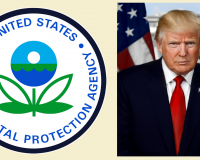
Vibrant Environment
Climate Change And Sustainability
All | Biodiversity | Climate Change and Sustainability | Environmental Justice | Governance and Rule of Law | Land Use and Natural Resources | Oceans and Coasts | Pollution Control

IBM today is reaffirming its support for the Paris Climate Agreement and stating clearly how we will continue our decades-long work to lower greenhouse gas emissions. Our call for an international agreement on this issue is more than a decade old, and we first voiced our support for the Paris Agreement in 2015 when it was negotiated.
![Food Waste By Taz [CC BY 2.0 (http:/creativecommons.org/licenses/by/2.0)], via Wikimedia C](/sites/default/files/styles/blog_thumbnail/public/images/blog/800px-gi-market-food-waste.jpg?itok=keZeK9ht)
Recycling food waste through composting and anaerobic digestion has the greatest potential by far to reduce the quantity of food waste going to landfills over the next 15 years relative to food waste reduction and reuse, according to ReFED. However, as more cities and states institute landfill food waste bans and other programs to promote recycling, the demand for centralized organic processing facilities is outpacing the supply. To address the gap, vendors are actively marketing to commercial customers new onsite pre-processing systems, including dehydrators, pulpers, and biodigesters. The systems can save money by reducing or eliminating off-site hauling of food waste and are well suited to facilities short on space and staff time. But the question arises: are the nutrients and energy in food waste really being recycled? The answer depends upon the next stage of processing.

The Trump Administration is clearly hungry for regulatory reform that reduces the cost and process burden of environmental regulation. Those who see a fundamental conflict between environmental protection and economic development welcome this development, as do those concerned that environmental requirements have become so extensive, detailed, and layered as to make compliance an elusive pursuit. Conversely, the shift raises concerns for those who see environmental protection and economic development as fully compatible goals and who fear environmental backsliding.

Although making no specific commitments, the Trump Administration continues to propose the potential renegotiation of NAFTA. House Democrats, in a Resolution earlier this spring, and a group of 15 environment, labor, and human rights groups, in an Eight-Point Plan, have called for a renegotiation of NAFTA that ensures that regulations protecting the environment are maintained.
In an earlier blog post, I discussed how environmental protection provisions incorporated in trade agreements could help mitigate the adverse environmental impacts of (international) trade. This post explores the inverse topic: how the investment chapters in NAFTA (and other trade agreements) may affect environmental and social protections in parties’ domestic regulation.

Never in my nearly thirty years as an environmental journalist have I seen such doom and gloom. And that era has seen a lot of doom and gloom, starting with the worldwide drought that made “Planet of the Year” in Time magazine in 1988 and continuing through predictions of global Armageddon from industrial pollutants and the dregs of an advanced society.

Communities throughout the United States are experiencing a variety of conditions associated with a changing climate—hotter summers and heat waves, droughts, intense storms and flooding, increased average precipitation and humidity, and more severe wildfires. Alongside potentially far-reaching environmental and economic impacts, these conditions have direct and indirect effects on human health. In recent years, scientists have begun to shed light on important climate-related health effects that occur indoors, where people spend the vast majority of their time.

When it comes to the global commons, President Donald Trump has made his stance on climate change policy pretty clear. What will be his views on ocean policy? Certainly, given the impact of climate change on ocean acidification, last month’s Executive Order on energy independence was not good news for ocean health. But there are a multitude of marine and coastal issues that the Trump Administration will have to face.

Higher Power: “A Unitarian Universalist church is suing the town of Bedford, Massachusetts, for denying a request to install solar panels on its property,” reports the ThinkProgress website. The church is “arguing that authorities are infringing on the congregation’s right to express their religious belief in clean energy solutions.”
The church applied for a “certificate of appropriateness” that would allow it to install solar panels on its sanctuary, but the town’s Historic District Commission turned it down.

Access to water is a fundamental climate change issue. It is related to significant political, social, and ecological struggles that indigenous peoples face internationally and here in the United States, as recent protests at the Dakota Access Pipeline clearly illustrate. Yet, governments and courts have done little to address such climate change inequities. So argues Dr. Itzchak Kornfeld, the Giordano Research Fellow at the Faculty of Law of the Hebrew University of Jerusalem, in The Impact of Climate Change on American and Canadian Indigenous Peoples and Their Water Resources.

Climate change presents immense challenges to coastal communities and to ecosystems affected by sea-level rise, salt water intrusion, changes in average temperature, storm frequency, and species composition. Existing wetland complexes are among the “natural and nature-based features” that currently buffer human communities from catastrophic storm events and that help ecosystems rebound from major stresses and impacts.